OP-ED
Letter from Mpumalanga — South Africa’s damaged paradise: Discovering the rock art of the Mthethomusha
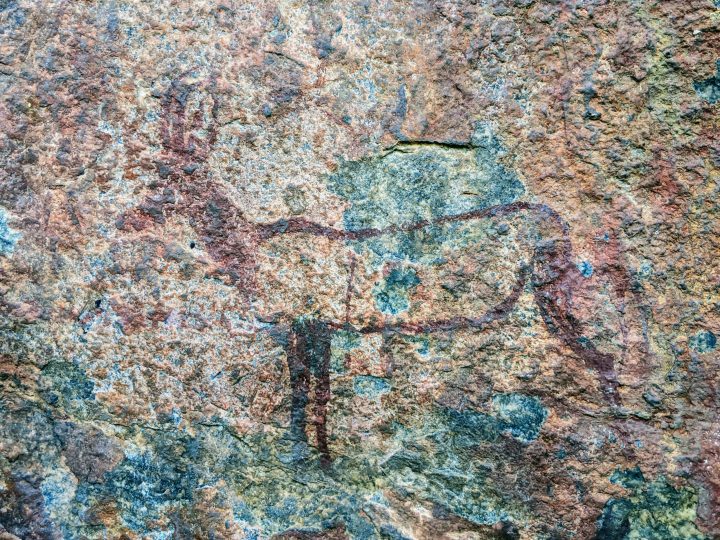
A curved rock face hooks out over a jumble of boulders, and there, more than a dozen figures greet us: red human figures crouch with their bows, below giant eland. Impalas feed on invisible bushes. Another human figure bends back in ecstatic agony — ancient San shamans regularly strove to induce alternate states of consciousness.
Glen Retief’s The Jack Bank: A Memoir of a South African Childhood, won a Lambda Literary Award. He teaches creative nonfiction at Susquehanna University and is spending a year in South Africa as a Fulbright Scholar.
A bright, sunny morning in the primeval Krokodilpoort mountains, four adventurers drive together up a rugged dirt track.
Bernard Nkosi, a ranger in Mthethomusha Game Reserve since 1999, is behind the wheel. Next to him sits ranger James Sibiya, who has worked here since 1993.
My husband Peterson and I balance on the back of their bakkie, ducking for thorn branches and whooping like kids when the vehicle bounces over a ditch.
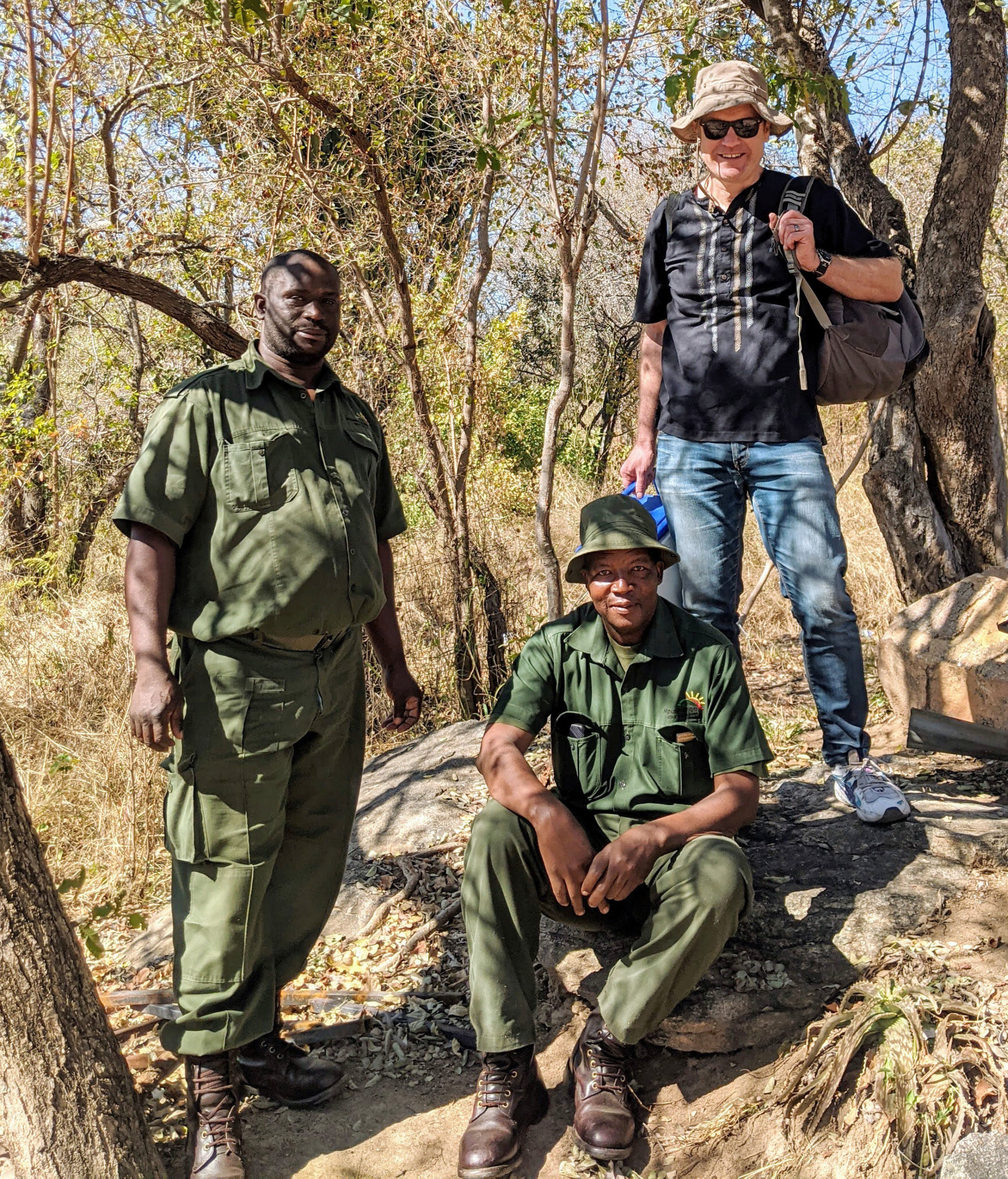
Ranger Bernard Nkosi, Ranger James Sibiya and Daily Maverick writer Glen Retief. (Photo: Peterson Toscano)
The scenery is magnificent. Located in Kruger’s southeastern corner, Mthethomusha offers a panorama of rocky hills, gushing streams and majestic marulas.
That said, the reserve has also been down on its luck. On 31 January, villagers burnt down its five-star Bongani Mountain Lodge concession in revenge for what they believed — mistakenly, according to Nkosi and Sibiya — was the shooting of a young local man by rangers.
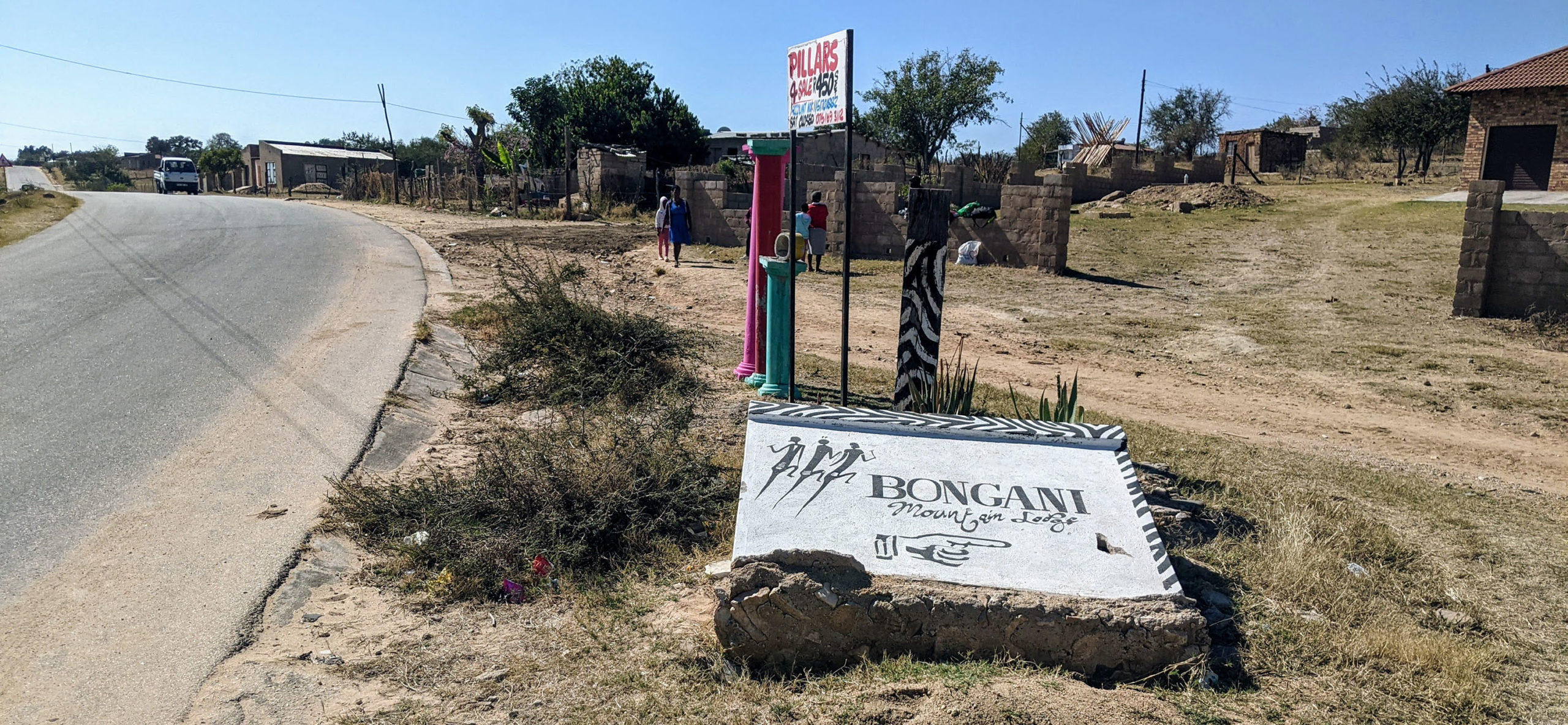
The sign to the Bongani Mountain Lodge remains undamaged, even though the lodge itself was burnt down on 31 January 2021. (Photo: Peterson Toscano)
Since then, the reserve has been closed. Poaching has also intensified, mostly for venison: so far, we haven’t seen so much as an impala.
However, today’s visit, by special arrangement with the Mpumalanga Tourism and Parks Agency, is not focused on the reserve’s diminishing stock of live animals, but rather its splendid and durable collection of painted creatures.
Once upon a time — say, in the early 2000s, when one Conraad de Rosner arrived at Mthethomusha as a freshly minted field guide — no one had any idea the area housed South Africa’s third-most significant collection of San rock art, after the Maloti-Drakensberg and the Cederberg.
De Rosner was something of an amateur archaeologist. As a boy, his mother teased him for scouring the fields for Stone Age tools while other boys collected coins or marbles.
On his first day at Mthethomusha, De Rosner noticed overhanging rocks near the lodge.
“I bet there are San rock paintings,” he told his manager, and when the staff confirmed this and took him there, De Rosner was immediately impressed by their variety, quality and condition.
De Rosner ended up staying at Mthethomusha for almost 12 years. During this time he discovered 250 separate rock art sites in an area roughly a third of Table Mountain. Most, he told me, he found “simply by hiking through the hills”.
The paintings are hard to date, but some scholars estimate that they are around 1,500 years old, made before the arrival of early cattle farmers. No one knows why there is such an extraordinary concentration around Mthethomusha.
De Rosner’s discovery prompted a good deal of attention in the 2000s from academics, the Digital Rock Art Archives and eventually lodge guests. Until February 2021, Sibiya and Nkosi regularly took tourists to several of the prominent sites.
Our bakkie pulls up at a koppie housing a painting titled The Honeymoon Suite. An eco-guide published by De Rosner in 2010 describes the climb as “a short easy walk up a path”. Not today, it isn’t.

Paintings found at the Honeymoon Suite in Mthethomusha Game Reserve. (Photo: Peterson Toscano)
Whatever path once existed is now a thicket of guarri trees and yellow elephant grass taller than me. As we drag ourselves up the slope, slipping and scrambling, the experience feels more “climbing wall” than “morning stroll”– that is, if bouldering challenges at the Virgin Active routinely involved shoving one’s hands and feet into crevices that might contain black mambas or banded rock scorpions.
But then we arrive and the clamber is worth it. A curved rock face hooks out over a jumble of boulders, and there, more than a dozen figures greet us: red human figures crouch with their bows beneath giant eland. Impalas feed on invisible bushes. Another human figure bends back in ecstatic agony — ancient San shamans would induce alternate states of consciousness, either through dancing or the use of hallucinogenic plants.

More paintings at the Honeymoon Suite in Mthethomusha Game Reserve. (Photo: Peterson Toscano)
What did these San artists see, more than a millennium ago? Around that time the Roman and Persian Empires were fighting three exhausting wars and the Sui Dynasty was reuniting China.
I picture vast herds of roan and impala. I imagine a time when a snapping branch signalled the approach of an angry buffalo.
“It’s our heritage,” Bernard Nkosi says, when I ask him if he thinks it’s part of a ranger’s job to protect paintings. “You see places like this, you feel the past.” He’s right.

More paintings found at the Honeymoon Suite in Mthethomusha Game Reserve. (Photo: Peterson Toscano)
When we’re done at the Honeymoon, we stop at another site in the reserve, in what was once the lion-breeding boma. Few local felines, sad to say, seem to have survived the recent competition with their human co-predators.
But the panel we view is notable for its large number of mountain reedbuck. One of the unique features of the Mthethomusha art is its relative biodiversity, with sable, rhebuck and roan all common.
But it’s our final painting site that blows us away. We travel to the outskirts of the reserve, out to Luphisi village. Off the main street coming into town, past a collection of houses and vegetable gardens, a lush, riverine forest cradles another outcrop.
Here, accessible for anyone with a car and a pair of walking shoes, awaits one of the largest and most beautiful San rock panoramas I’ve seen anywhere: for my money, easily the equal of, say, Battle Cave or Wildebeest Kuil.
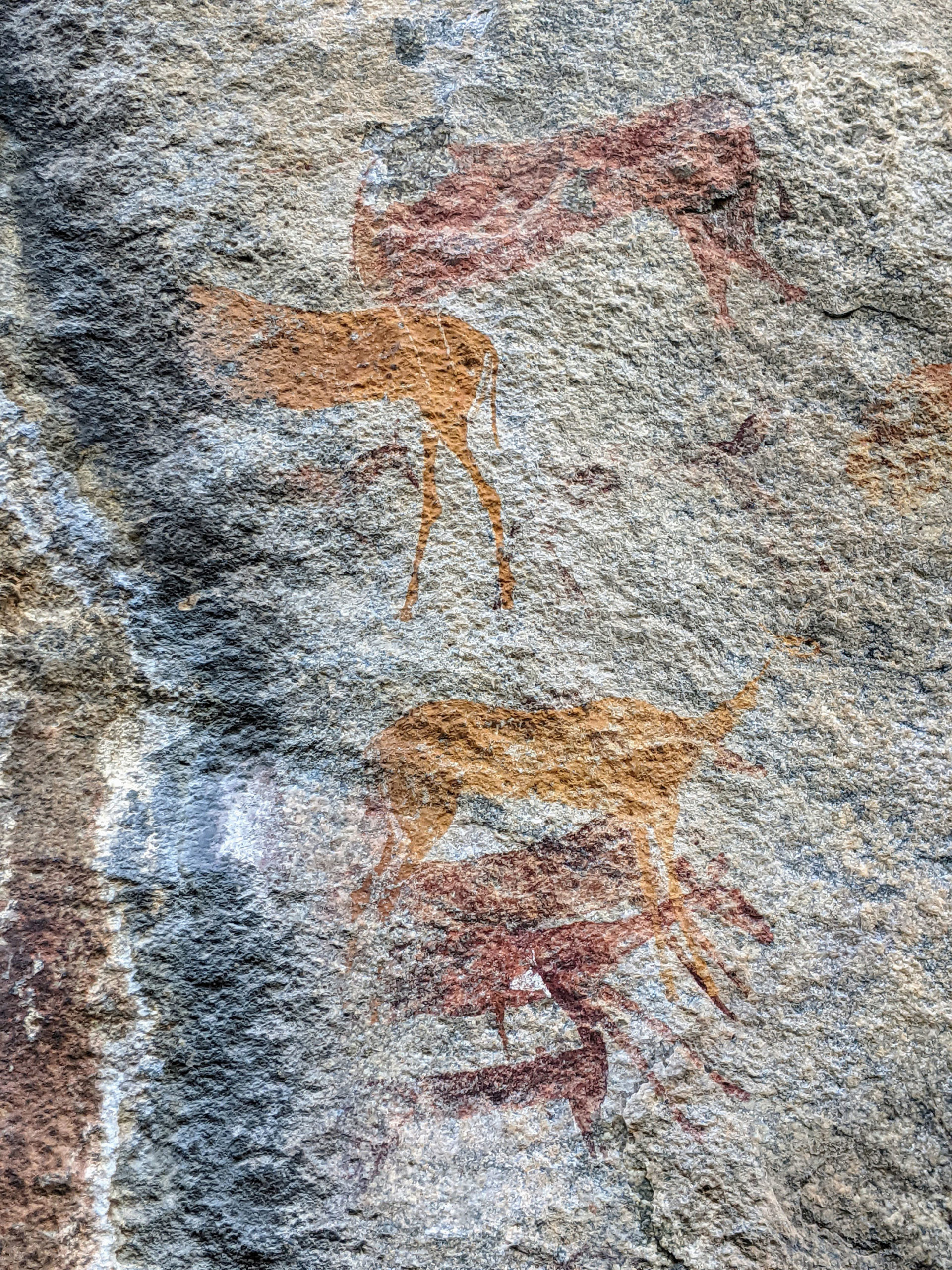
The Luphisi paintings reveal a sophisticated use of cracks in the rock in the artistic composition Here, antelope seem to enter a crack, which may represent animals moving between the real world and the spirit world. (Photo: Peterson Toscano)
Dozens of impala, roan, reedbuck and rhebuck stampede eastwards. Kudu emerge from or disappear into cracks in the rock, sauntering, symbolically speaking, between the material and spirit worlds. Perhaps a dozen human figures dance and whirl — one spreads her arms out like an eagle’s wings.

This figure at the Luphisi site appears to have their arms spread out, a pose that may have been common in the trance-like dances scholars think San painters performed while they worked. (Photo: Peterson Toscano)
Perhaps most intriguingly, in the top left corner of the tableau, three nested human figures appear to jet through the air, with Boeing-style vapour trails behind them. Scholars speculate this may represent the shamans’ out-of-body experiences.
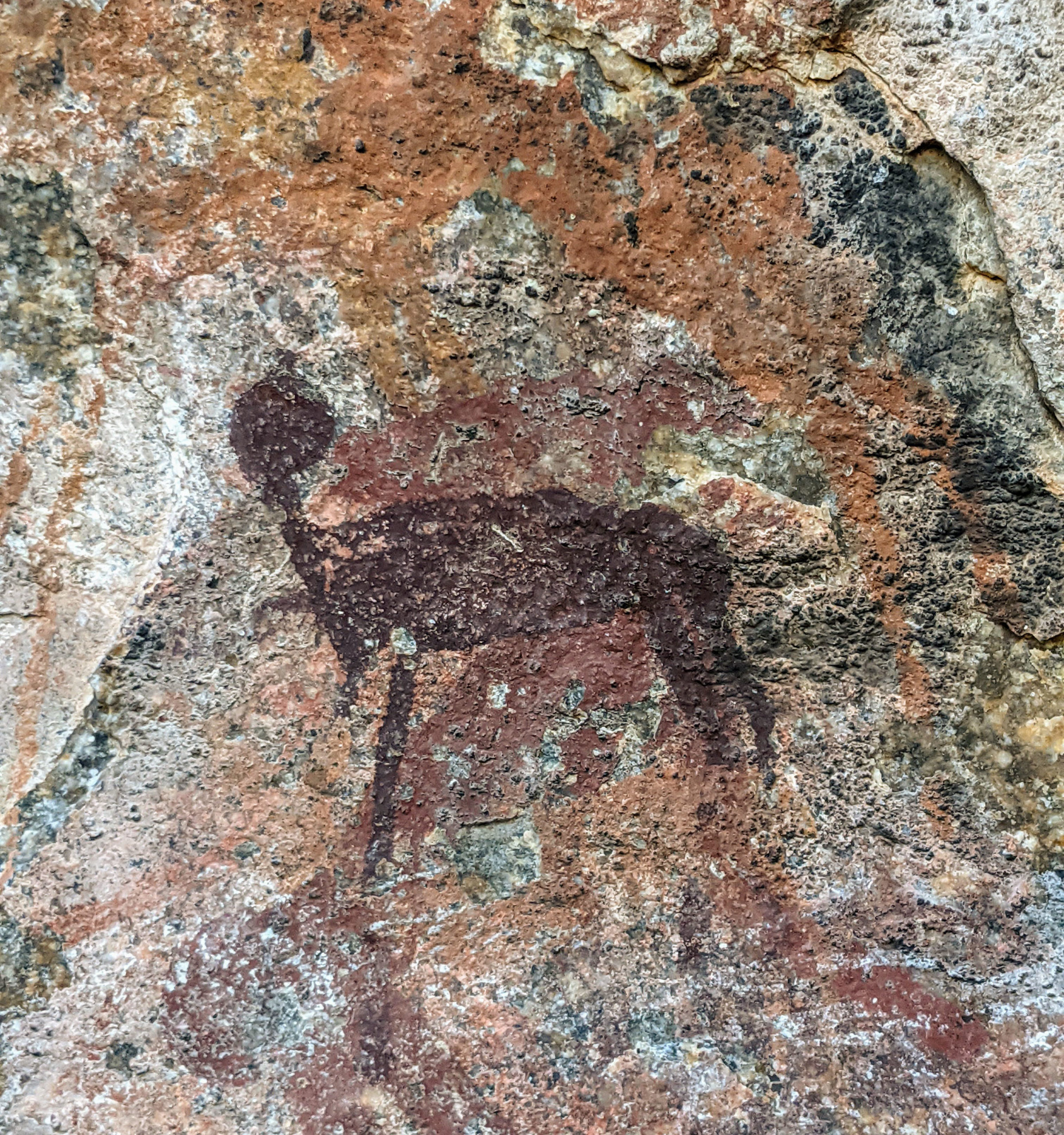
A mysterious figure at the Luphisi site. (Photo: Peterson Toscano)
This artwork dwarfs us. Much like when I view Monet’s life-sized lily ponds or Rothko’s floating rectangles, I feel subsumed by this work — swallowed. The surrounding forest adds to the timelessness: after all, these broad-trunked figs might have had great-grandparents who shaded the artists.
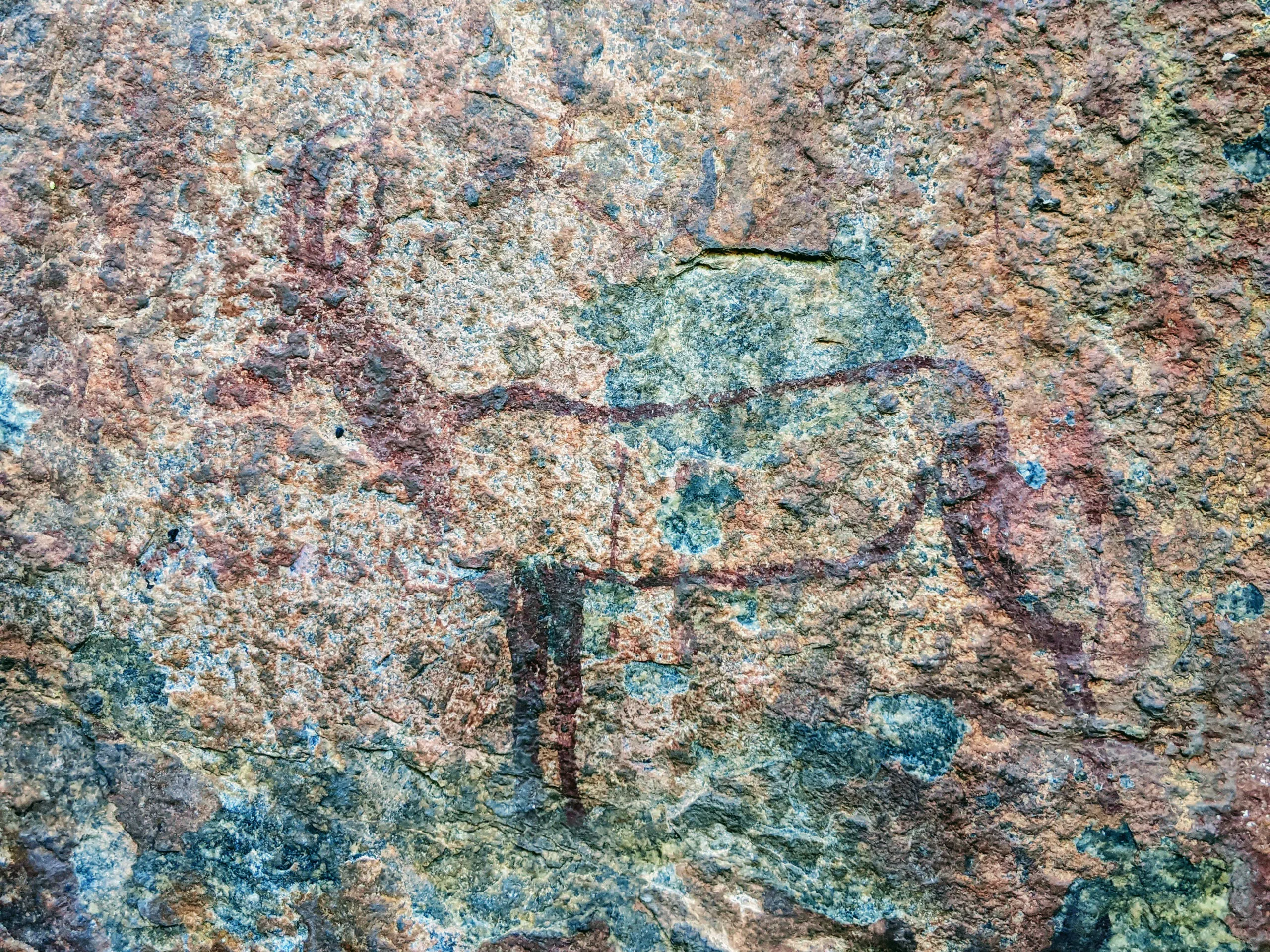
Roan antelope, like this one at the Luphisi site, are relatively rare in San rock paintings. (Photo: Peterson Toscano)
Yet today, no one comes here. It is Sibiya’s and Nkosi’s first time. A colleague, Alfred, who helped direct us, confirmed that the locals generally ignore it.
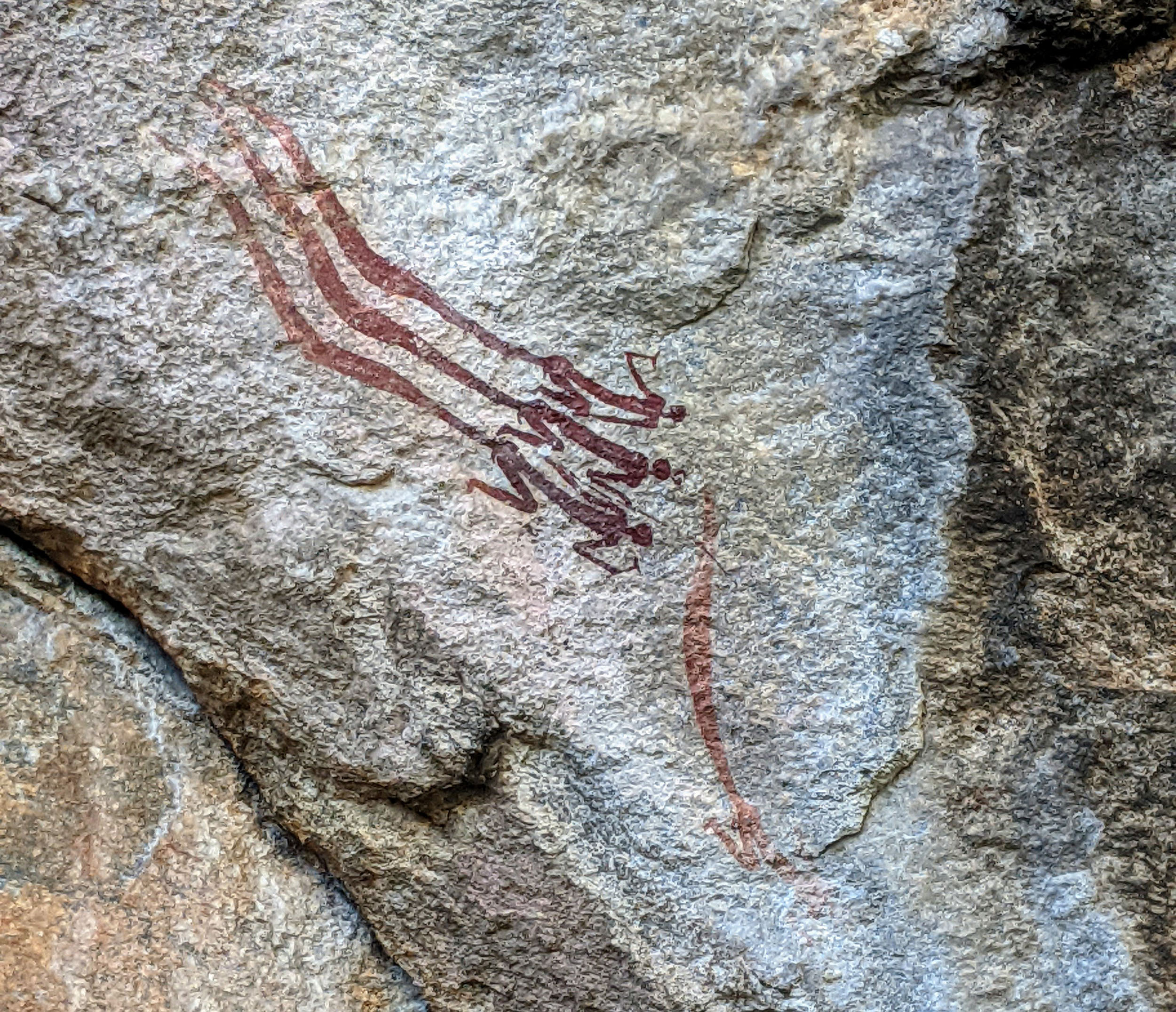
Three flying human figures with mysterious vapour trails at the Luphisi rock painting site. (Photo: Peterson Toscano)
According to Mpumalanga Tourism, plans are in motion to rebuild Bongani Mountain Lodge and restock the reserve. However, “this process might take longer than anticipated due to budget limitations”.
One can only hope that when the tourists at last return, these cultural treasures will continue to stand, unblemished, vistas of a lost great dance when humans and animals whirled together in a sustainable balance. DM


















 Become an Insider
Become an Insider
Comments - Please login in order to comment.